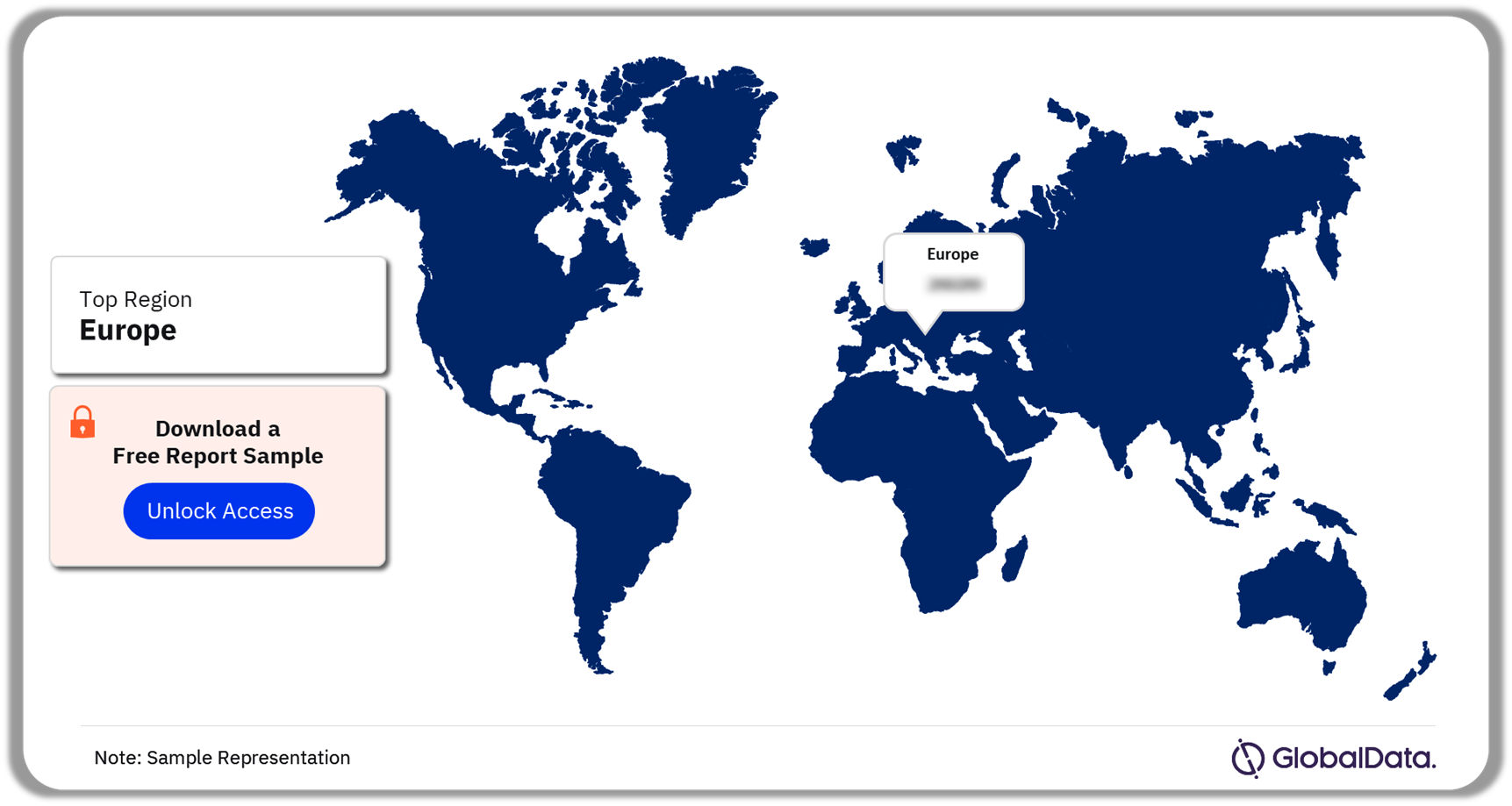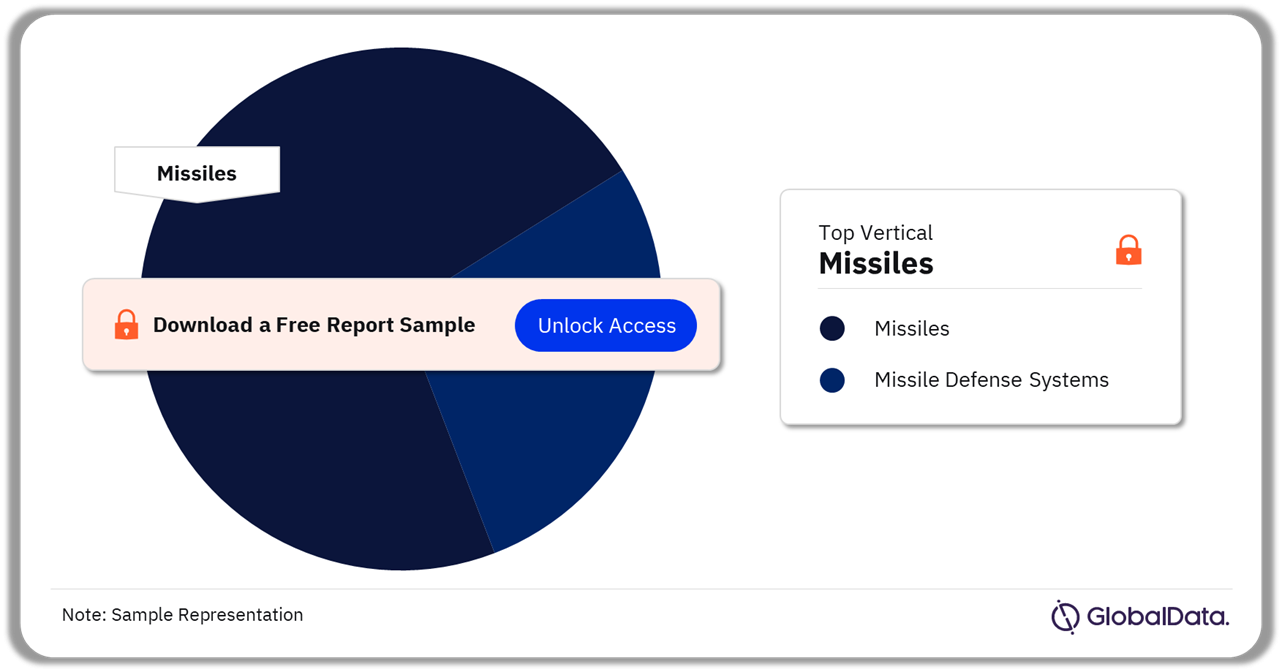A general overview of the global missile defense systems market. Please note that the landscape may have evolved since then, and for the latest information, it's advisable to refer to recent reports, defense publications, and industry analyses.

For more regional insights, download a free sample report
1. Market Overview:
- Key Players: Major defense contractors and companies involved in missile defense systems include Lockheed Martin Corporation, Raytheon Technologies Corporation, Northrop Grumman Corporation, and BAE Systems, among others.
- Market Size: The global missile defense systems market has seen steady growth due to increasing threats, geopolitical tensions, and the modernization of military capabilities.
2. Types of Missile Defense Systems:
- a. Ballistic Missile Defense (BMD): Systems designed to intercept and destroy ballistic missiles during different phases of their flight.
- b. Anti-Aircraft Systems: Defense systems capable of countering incoming aircraft, including drones and cruise missiles.
- c. Anti-Ship Missile Defense: Systems focused on protecting naval assets from anti-ship missiles.
3. Key Technologies:
- a. Interceptors: Advanced interceptor missiles with capabilities for mid-course and terminal phase interceptions.
- b. Radar Systems: High-performance radar systems for early detection, tracking, and targeting of incoming missiles.
- c. Command and Control Systems: Integrated systems for real-time decision-making and coordination of missile defense operations.
4. Regional Market Dynamics:
- a. United States:
- Investing heavily in missile defense technologies, with a focus on homeland defense and regional capabilities.
- b. Europe:
- Implementation of missile defense systems to address regional threats, with NATO's European Phased Adaptive Approach (EPAA) being a key initiative.
- c. Asia-Pacific:
- Growing investments in missile defense by countries such as Japan and South Korea due to regional security concerns, particularly related to North Korea.
5. Technological Advancements:
- a. Directed Energy Weapons: Research and development in laser and other directed energy technologies for missile defense.
- b. Hypersonic Threats: Focus on countering hypersonic missile threats through advanced detection and interception capabilities.
6. Market Trends:
- a. Integration of Sensors: Increasing integration of various sensor technologies, including space-based sensors, for enhanced threat detection and tracking.
- b. International Collaboration: Collaborative efforts among nations to develop joint missile defense capabilities and share technological expertise.
7. Strategic Initiatives:
- a. Layered Defense Approaches: Implementation of layered defense strategies combining interceptors, radars, and other technologies for comprehensive protection.
- b. Counter-UAS (Unmanned Aerial Systems) Systems: Growing focus on countering the threat posed by unmanned aerial systems, including drones.
8. Emerging Threats and Responses:
- a. Hypersonic Missiles: Development of defenses against hypersonic missile threats, which pose challenges due to their high speed and maneuverability.
- b. Cruise Missile Defense: Enhancement of capabilities to counter the evolving threat from cruise missiles.
9. Market Challenges:
- a. Cost Constraints: The high cost of developing and maintaining advanced missile defense systems poses financial challenges for some nations.
- b. Evolving Threats: Adapting to rapidly evolving missile technologies and ensuring effective defenses against a diverse range of missile threats.
10. Future Outlook:
- a. Innovation and Research: Continued emphasis on research and development to stay ahead of emerging missile threats.
- b. Global Collaborations: Increasing international collaborations and partnerships for joint development and deployment of missile defense systems.
Conclusion:
The global missile defense systems market remains dynamic, with ongoing advancements in technology, evolving threat landscapes, and strategic initiatives shaping the industry. Nations continue to invest in innovative solutions to enhance their missile defense capabilities, contributing to the overall growth and development of the market. For the latest and most accurate information, it is recommended to refer to recent defense publications and industry reports.


